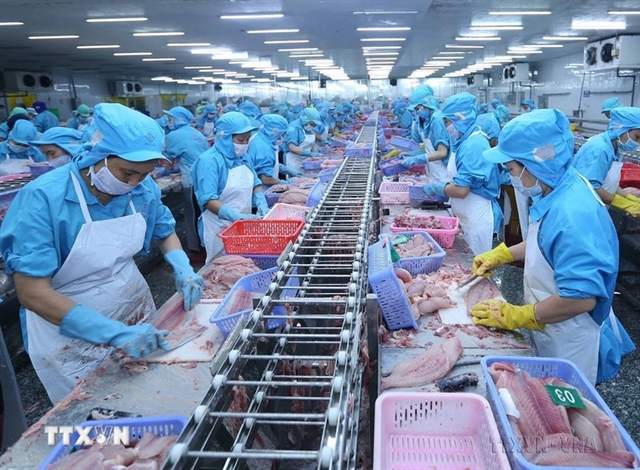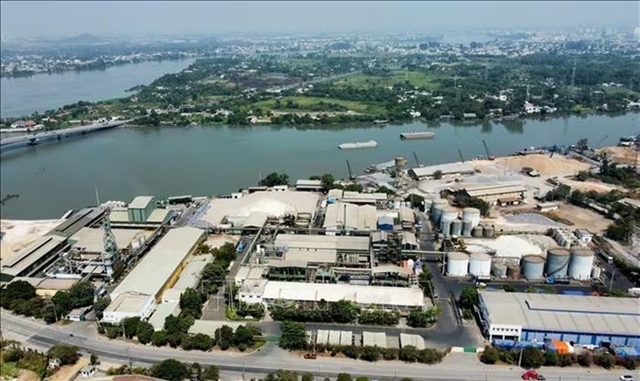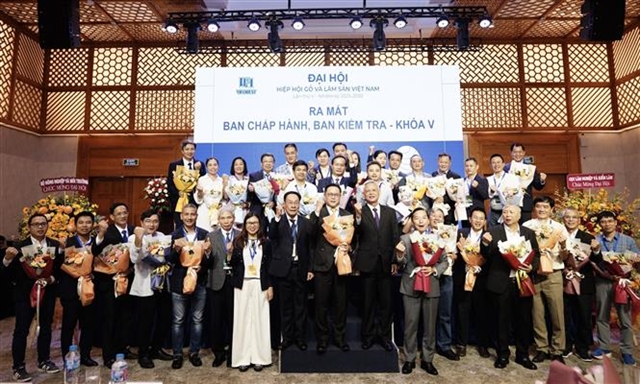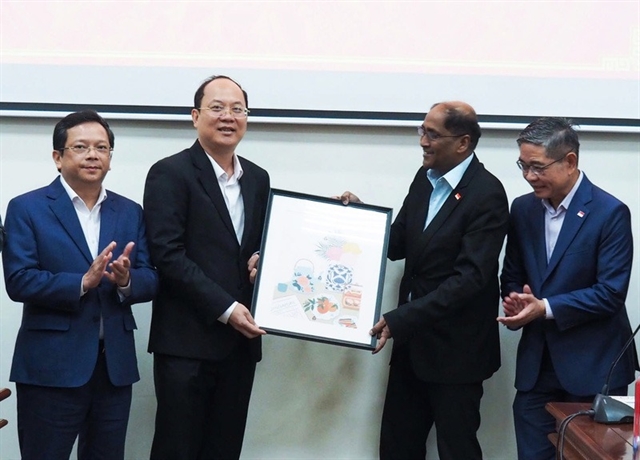 Economy
Economy

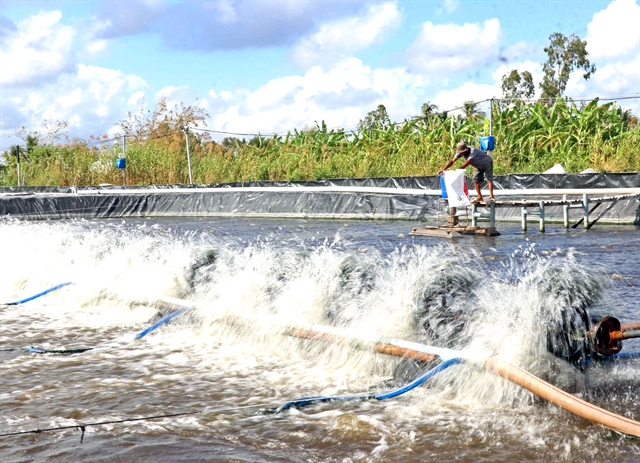 |
| Ponds in which white-legged shrimp are raised using the three-stage super-intensive breeding model in Cà Mau Province. – VNA/VNS Photo Huỳnh Anh |
CÀ MAU – Cà Mau Province plans to boost aquaculture production to serve exports this year.
The country’s southernmost province seeks to produce 660,000 tonnes of seafood, including 262,000 tonnes of shrimp.
The country’s largest shrimp-producing province also targets seafood exports worth US$1.14 billion this year, up from $1.12 billion in 2024.
It has for long been exporting more than $1 billion worth of shrimp annually.
To increase aquaculture output, it will develop stable aquaculture zones, according to its Department of Agriculture and Rural Development.
The province has around 280,000ha of shrimp farms, accounting for 45 per cent of the Cửu Long (Mekong) Delta’s total area.
Phan Hoàng Vũ, director of the department, said the province would invest in aquaculture infrastructure in a systematic manner to expand production and meet the demand for processing for export.
It would promote the use of advanced techniques in aquaculture production to improve shrimp yield and quality, replicate effective shrimp breeding models that align with environmental protection requirements, and develop shrimp farming areas that meet international quality standards for export.
As of the beginning of this year, the province had 22,590ha of shrimp farms with international quality certification from ASC, BAP, EU Organic, Bio Suisse, Selva Shrimp, Mangrove Shrimp, and Naturland.
Most shrimp farming areas have adopted the shrimp-rice and shrimp-forest models.
In addition to shrimp farming, the province will also focus on developing value-added products from shrimp by-products, helping protect the environment and enhance value for the shrimp industry.
It will expand markets and develop shrimp brand names both domestically and internationally.
It will organise shrimp farming by fostering linkages between various stakeholders, establishing large-scale breeding areas, ensuring origin traceability, and enhancing the competitiveness of its shrimp.
With its advantages in developing super-intensive shrimp farming, the province has designated 6,800ha for this model this year.
Last year, it had 5,025ha of super-intensive shrimp farming areas that achieved an average yield of 20.5 tonnes per hectare.
The province Department of Science and Technology has collaborated with the Research Institute for Aquaculture No. 2 and Cần Thơ University to research and create models for farming white-legged shrimp using a three-stage intensive breeding method.
This method utilises water circulation technology, requiring fewer water changes and ensuring biosecurity and helping farmers reduce production costs and produce clean shrimp.
It is sustainable and environmentally friendly.
Last year, the province farmed brackish water shrimp on 278,000ha, producing 242,000 tonnes, up 4.5 per cent from 2023.
Shrimp yields increased by 38 kilogrammes per hectare to 869 kilogrammes.
The province has adopted various models, including shrimp-rice and shrimp-forest farming besides extensive, intensive and super-intensive methods.
Shrimp-rice and shrimp-forest farming are considered sustainable as they are adapted to climate change and environment-friendly.
Farmers engaged in shrimp-rice farming earned good profits from the last shrimp harvest.
Hồ Văn Trinh, who owns a 1.5ha shrimp-rice field in Thới Bình District’s Biển Rạch Đông Commune, said he harvested more than 400 kilogrammes of giant river prawns and earned profits of VNĐ50 million ($2,000).
Giant river prawns fetched high prices of VNĐ100,000 – 170,000 ($4-7) per kilogramme in the last season.
The province has organised numerous training courses for shrimp farmers to help them maximise profits.
It has expanded shrimp processing for export, thereby increasing the value of the crustacean. It now has 41 seafood processing plants with a total capacity of 259,000 tonnes per year.
These plants export to 60 territories and countries, including the US, EU, Japan, South Korea, China, Australia, and Canada. – VNS

